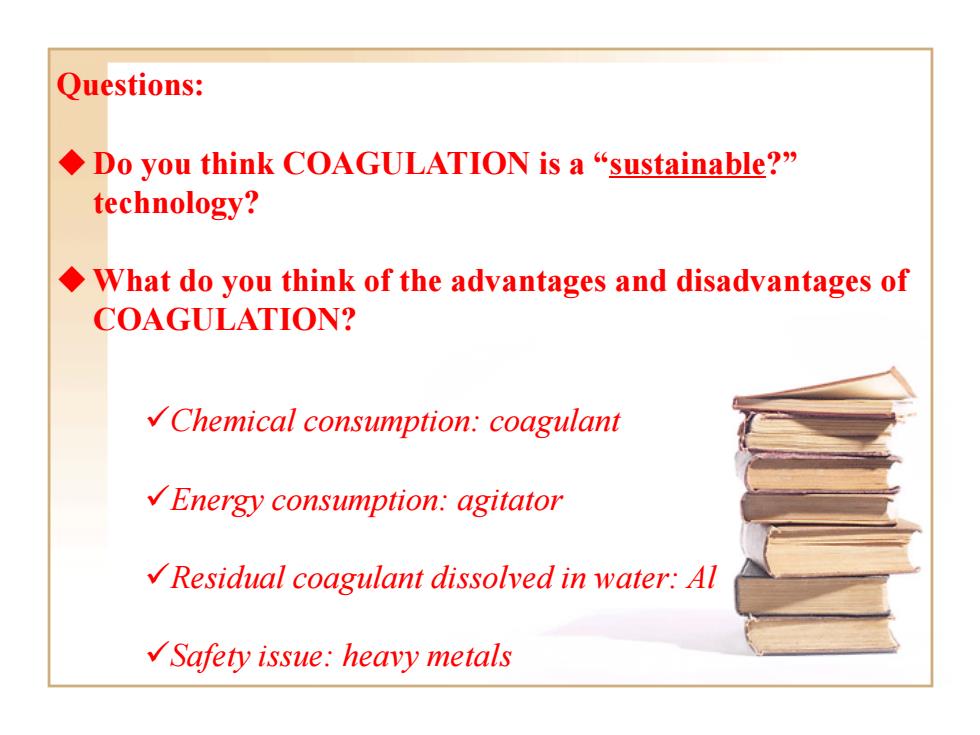
Questions: ◆Do you think COAGULATION is a“sustainable?” technology? What do you think of the advantages and disadvantages of COAGULATION? Chemical consumption:coagulant Energy consumption:agitator Residual coagulant dissolved in water:Al Safety issue:heavy metals
Questions: Do you think COAGULATION is a “sustainable?” technology? What do you think of the advantages and disadvantages of COAGULATION? Chemical consumption: coagulant Energy consumption: agitator Residual coagulant dissolved in water: Al Safety issue: heavy metals
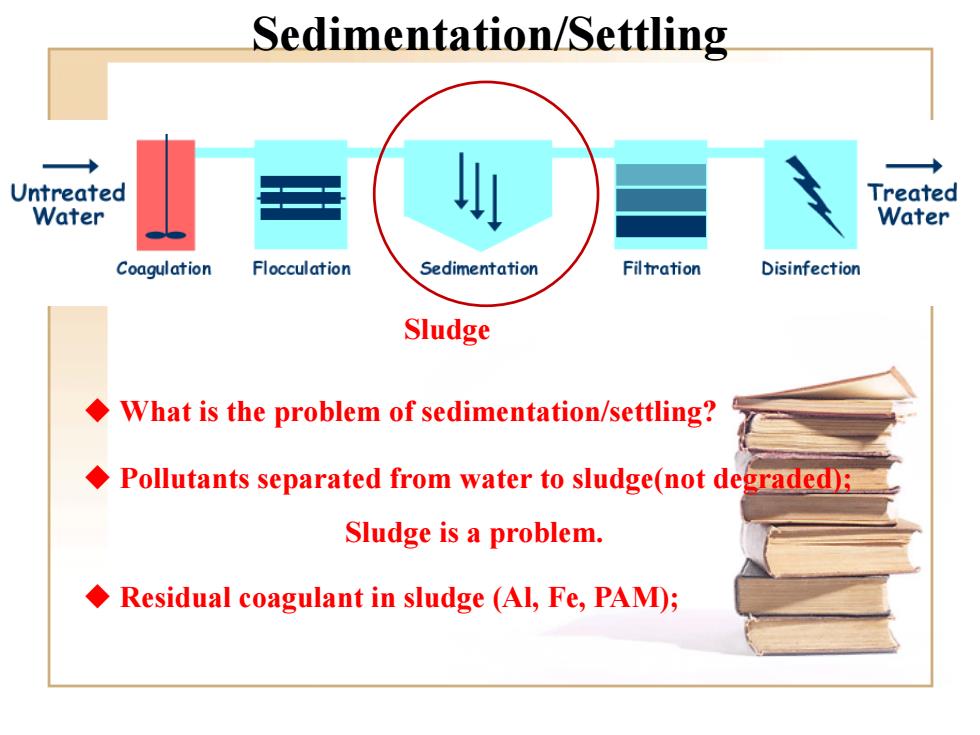
Sedimentation/Settling ◆ ◆ Untreated Treated Water Water Coagulation Flocculation Sedimentation Filtration Disinfection Sludge What is the problem of sedimentation/settling? Pollutants separated from water to sludge(not degraded); Sludge is a problem. Residual coagulant in sludge(Al,Fe,PAM);
Sedimentation/Settling Sludge What is the problem of sedimentation/settling? Pollutants separated from water to sludge(not degraded); Sludge is a problem. Residual coagulant in sludge (Al, Fe, PAM);
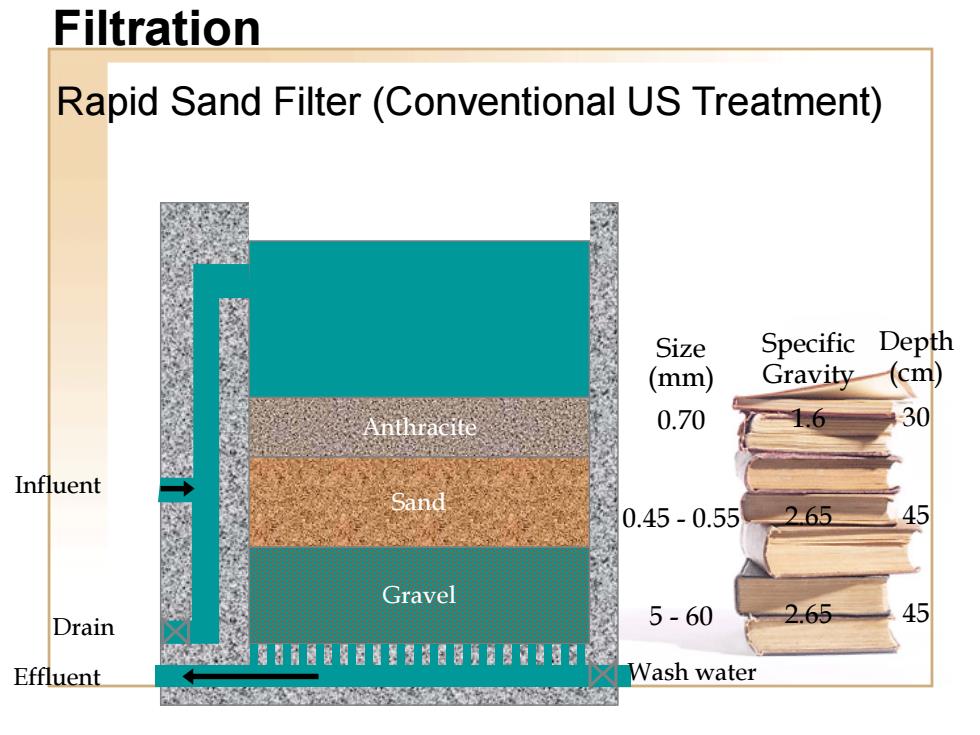
Filtration Rapid Sand Filter(Conventional US Treatment) Size Specific Depth (mm) Gravity (cm) 0.70 30 Influent Sand 0.45-0.55265 45 Gravel 5-60 2.65 Drain 45 Effluent Wash water 222
Filtration Sand Gravel Influent Drain Effluent Wash water Anthracite Size (mm) 0.70 0.45 - 0.55 5 - 60 Specific Gravity 1.6 2.65 2.65 Depth (cm) 30 45 45 Rapid Sand Filter (Conventional US Treatment)
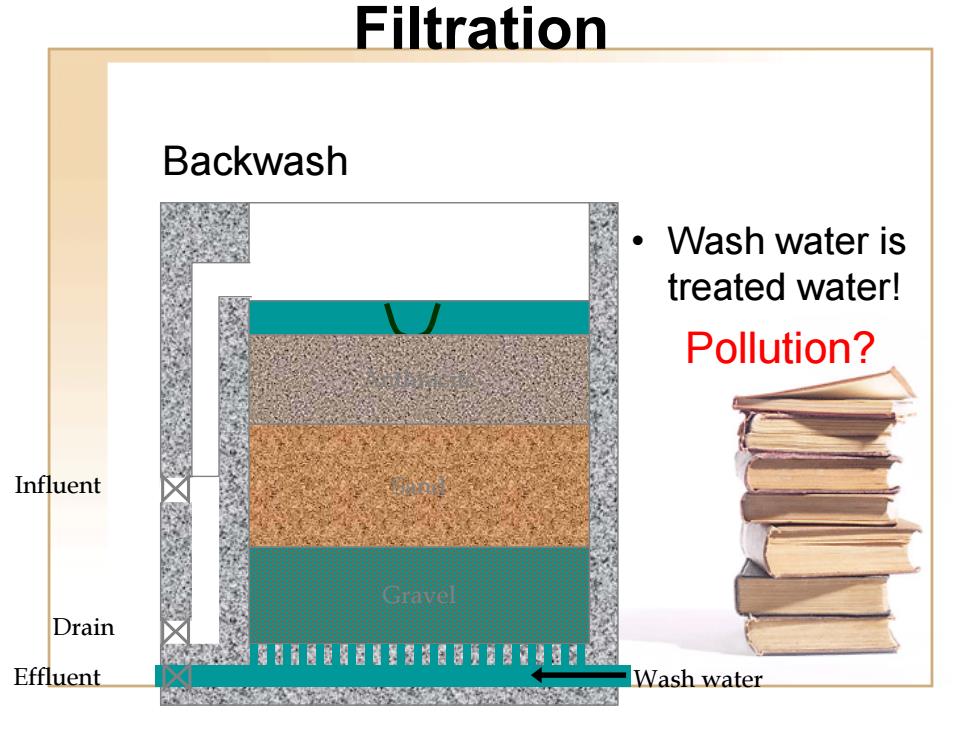
Filtration Backwash Wash water is treated water! Pollution? Influent 图 Drain 超M喝项 Effluent Wash water 222
Sand Gravel Influent Drain Effluent Wash water Anthracite Backwash • Wash water is treated water! Filtration Pollution?
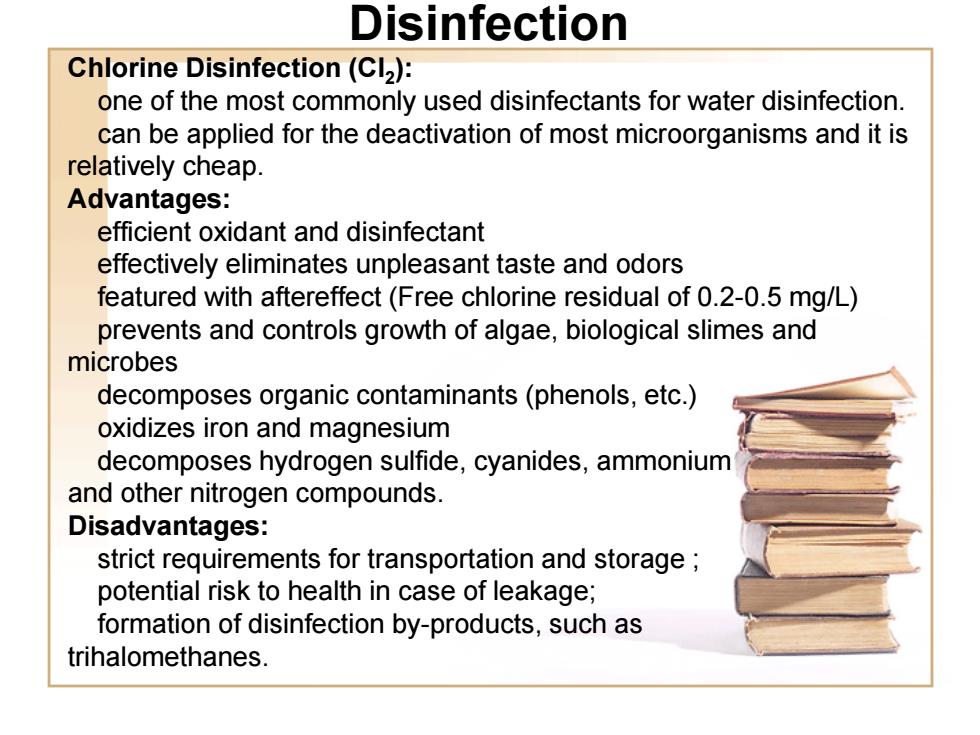
Disinfection Chlorine Disinfection(Cl2): one of the most commonly used disinfectants for water disinfection. can be applied for the deactivation of most microorganisms and it is relatively cheap. Advantages: efficient oxidant and disinfectant effectively eliminates unpleasant taste and odors featured with aftereffect(Free chlorine residual of 0.2-0.5 mg/L) prevents and controls growth of algae,biological slimes and microbes decomposes organic contaminants(phenols,etc.) oxidizes iron and magnesium decomposes hydrogen sulfide,cyanides,ammonium and other nitrogen compounds. Disadvantages: strict requirements for transportation and storage; potential risk to health in case of leakage; formation of disinfection by-products,such as trihalomethanes
Chlorine Disinfection (Cl2): one of the most commonly used disinfectants for water disinfection. can be applied for the deactivation of most microorganisms and it is relatively cheap. Advantages: efficient oxidant and disinfectant effectively eliminates unpleasant taste and odors featured with aftereffect (Free chlorine residual of 0.2-0.5 mg/L) prevents and controls growth of algae, biological slimes and microbes decomposes organic contaminants (phenols, etc.) oxidizes iron and magnesium decomposes hydrogen sulfide, cyanides, ammonium and other nitrogen compounds. Disadvantages: strict requirements for transportation and storage ; potential risk to health in case of leakage; formation of disinfection by-products, such as trihalomethanes. Disinfection